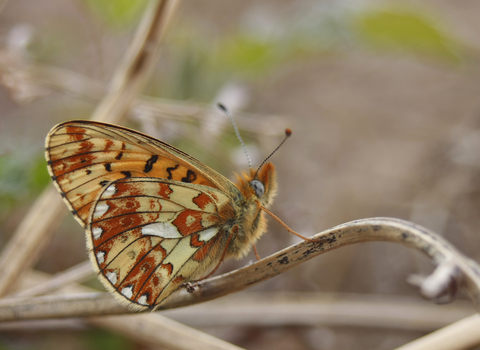
Pearl-bordered Fritillary ©Tamasine Stretton
©Philip Precey
Pearl-bordered fritillary
The pearl-bordered fritillary is a striking orange-and-black butterfly of sunny woodland rides and clearings. It gets its name from the row of 'pearls' on the underside of its hindwings.
Scientific name
Boloria euphrosyneWhen to see
April to AugustSpecies information
Category
Statistics
Wingspan: 3.8-4.7cmProtected in the UK under the Wildlife and Countryside Act, 1981. Priority Species under the UK Post-2010 Biodiversity Framework.
